
We feature a lot of cars here on Speedhunters that are quick – or at least have the promise of speed due to big horsepower numbers, outrageous body kits or some other product or part that infers performance. But there are some cars that just deliver, without any histrionics or showing off, and require you to redefine your concept of quick. This DS3 rallycross Supercar is one of them. It has more mechanical traction than most cars you’ll ever see, and sometimes it’s not about what your top speed is but how you get there. Liam Doran’s Monster Energy Citroën DS3 Rallycross car gets there faster than your eyes can keep up with, and in more outrageous style than should be legal.
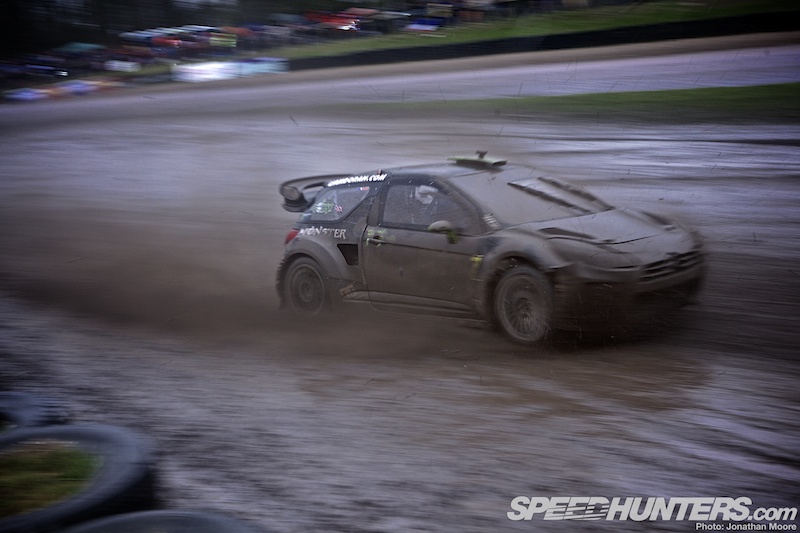
The reason this modest French hatchback is such a car is due to a number of factors, but a simple way to think about it is to take on board a basic fact: this DS3 gets from zero to 60mph quicker than a Formula 1 car. And it’s designed to do that on a surface which can be optimistically described as loose, and in reality is often more mud-bath than racetrack.
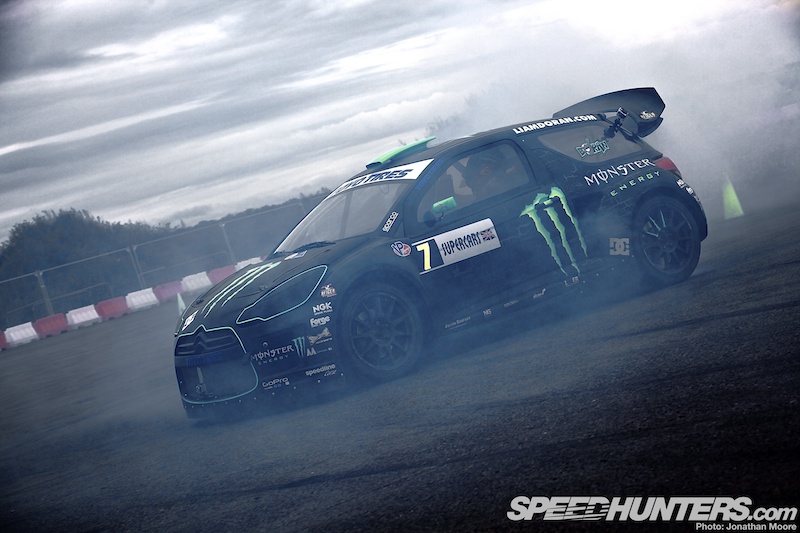
A mutant hybrid of a highly developed World Rally Championship car, a drag racer and a tank, a rallycross Supercar is a schizophrenic beast. Throughout the sport’s forty-plus year history rallycross has ingested both cutting-edge rally cars and homebrew specials, spitting them back out as brutally over-powered behemoths.
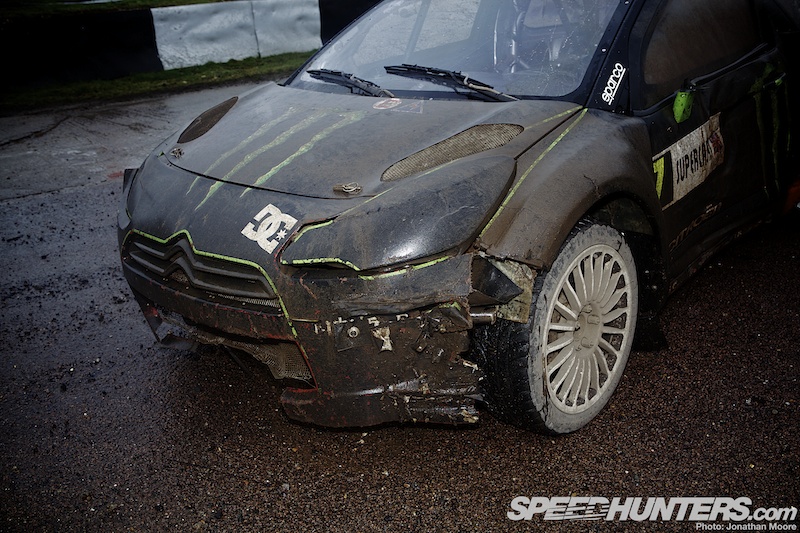
Rallycross cars are built around a basic principle: survival. The closest analogy I can think of is that of an A10 Warthog tank-buster ‘plane, built to take untold numbers of hits and frightening amounts of battle damage, but at the same time to remain functional and capable of completing the mission. That’s why rallycross cars go from a pristine condition pre-race to looking like they’ve been blown up in the space of four minutes – and still finish. They cannot be destroyed. (Except by someone putting in a stupidly long jump with concrete supports, perhaps).
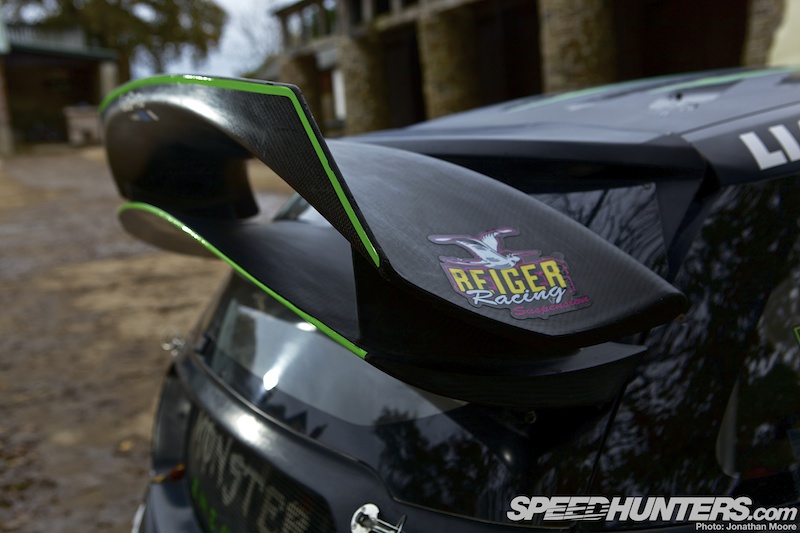
The aero might look good – but plays little part in the proceedings. It’s what’s happening under the hood that counts.
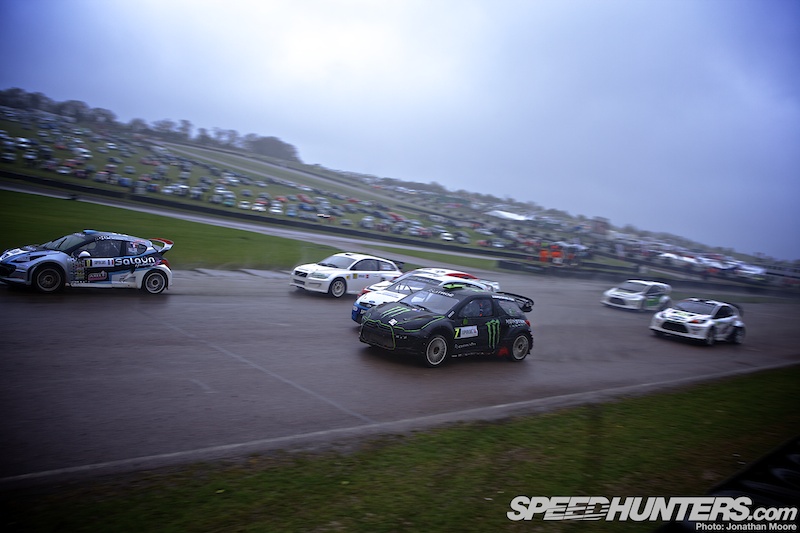
The best way to understand the insane power of a rallycross Supercar is, as with so many disciplines, to see one race – and especially to witness a start. If your neck can take it. That’s where the ferocity is plain to see. Imagine half a dozen or more of these things, straining on the limiters, exhausts popping and crackling, waiting for the lights to go out. And when they do, it’s like time has been speeded up. They are gone. Disappeared. Already 100 yards up the road, bumping and boring into the first corner whilst likely already dealing with a surface change from loose to looser.
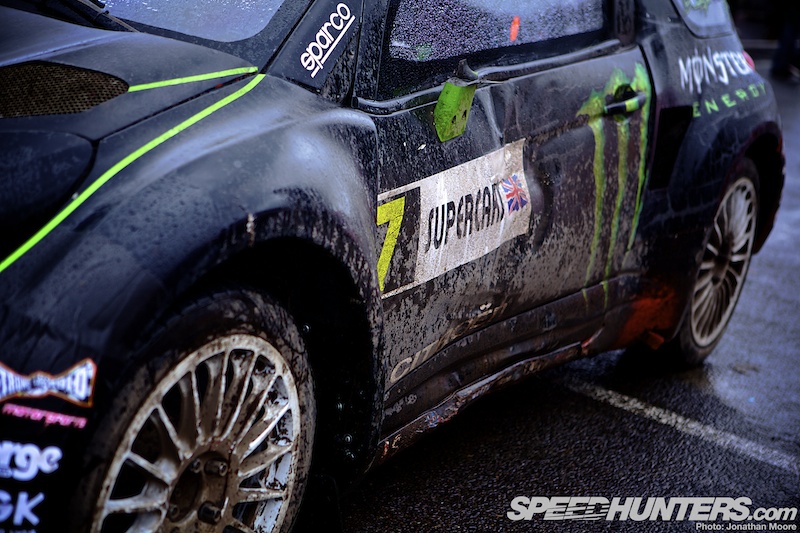
Rallycross was a sport that was huge in Europe in the 1980s and early 1990s, a staple of Saturday afternoons on mainstream TV in the UK, with its wham-bam competition and short, sharp shock races. It made – and still makes – perfect TV. It blossomed on the demise of Group B rallying, hoovering up the now homeless cars and further developing them into short-range tactical nuclear missiles. The traditional story of manufacturer withdrawal led to a low-point in the mid-’90s, but now rallycross is back and bigger than ever, helped by its exposure with Global Rallycross in the States and revived popularity in the UK and Europe.
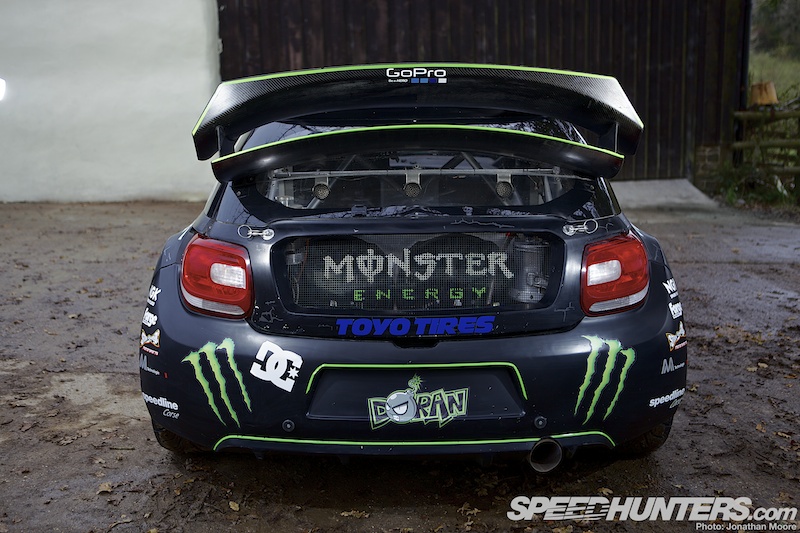
The Doran family name is intrinsically linked with the sport in the UK: Liam’s father Pat is a four-time British rallycross champion who came in during the heyday of the sport in the early ’90s and competed against the legends of the time. After initial success in the European championship, Pat partially retired in 1994 to successfully run his own business before being drawn back into the fold in 2001; his first title came at the wheel of his famous RS200 ‘Rosie’ in 2002, a second in a Fiesta ST Turbo in ’05 and then another pair in ’09-10, also in a Fiesta.
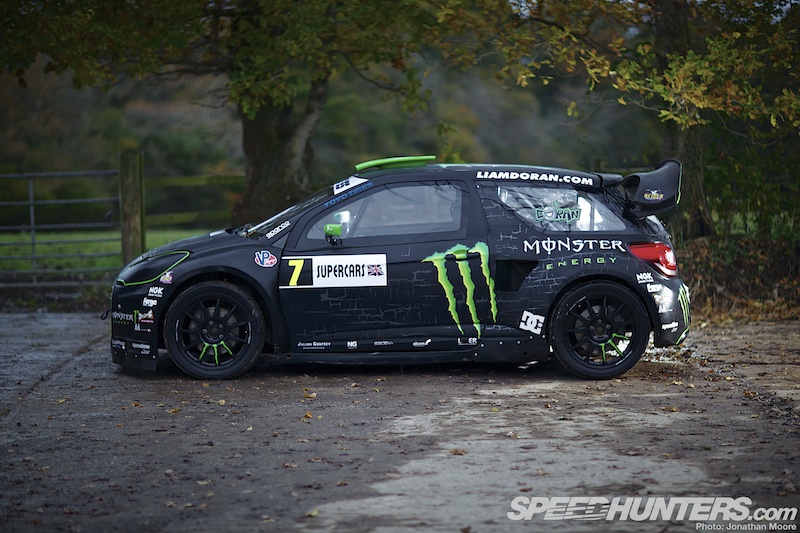
Competing isn’t all he does for the sport: the family’s commitment to rallycross goes much deeper, and in the late 2000s they first rented and then bought the Lydden Hill track in Kent – the spiritual home of rallycross. It’s gradually being transformed into a modern venue, and every meeting sees the crowds flock to its natural amphitheatre. Pat’s son Liam grew up around racetracks, so it was no surprise that he wanted to follow in his father’s footsteps.
Liam: “From the age of three I’d be trying to help him fix his car – or thinking I was being helpful at least. If anyone ever asks who my hero was, it was always my dad. I always wanted to be like him – he gave me the passion. All I ever wanted to do was be a racing driver. I used to try and drive the lawnmower… anything to drive something!”
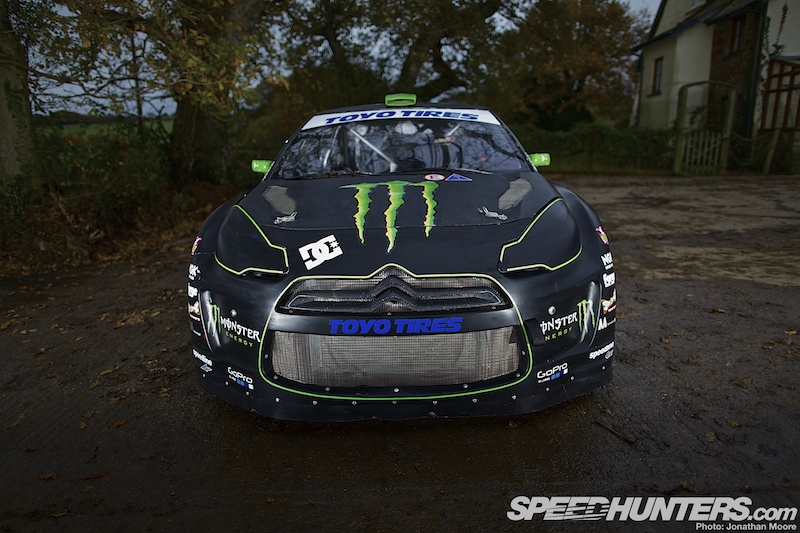
“When I raced in the British Rally Championship for the first time in a Supercar it was in my dad’s car. He let me try it out, and then gave me the chance for one year to have a go. He was my direct team-mate, and I made the most of it, trained as hard as I could – and he beat me! I came second. But he was happy that I’d met his expectations. At some point I guarantee I’m going to come back and win the British championship like my dad did. It’s something I’ve got to do. He’s 52, so I’ve got 25 years or so. Though I’ve got to do it four times of course…”
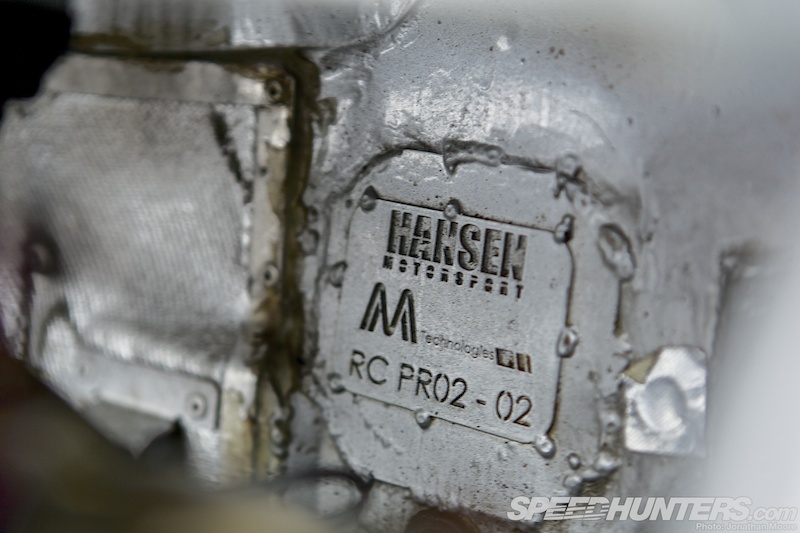
The base car is a Citroën DS3 built by M-Technology in France – effectively the same as a WRC – and prepared by Hansen Motorsport in Sweden. But as soon as Liam’s 2012 car arrived at Doran HQ it was stripped back and prepared for a fundamental change in concept. One of a pair of Citroën DS3s run by the team during 2012, the two cars had a big difference. Pat’s British Rallycross Championship car ran its engine in the factory inline configuration, whereas Liam’s European Rallycross Championship car was switched to transverse. Pat explains the reasoning:
Pat: “If you see the start-line of a rallycross circuit and look down at the black tyre marks, you will see the cars go off at a slight twist. As they leave the line the back wheels try and come round. The reason for that is because the engines are normally inline and so powerful that the internal inertial motion of the engine pulls the car to one side. But with a transverse car, as the engine is facing the direction of travel it gives you more even lateral grip. It’s better off the start, but also through the corners. You’ll see that inline cars like the older C4 drift through corners, whereas these just grip and go. It’s not so dramatic, but it’s so much more effective.”
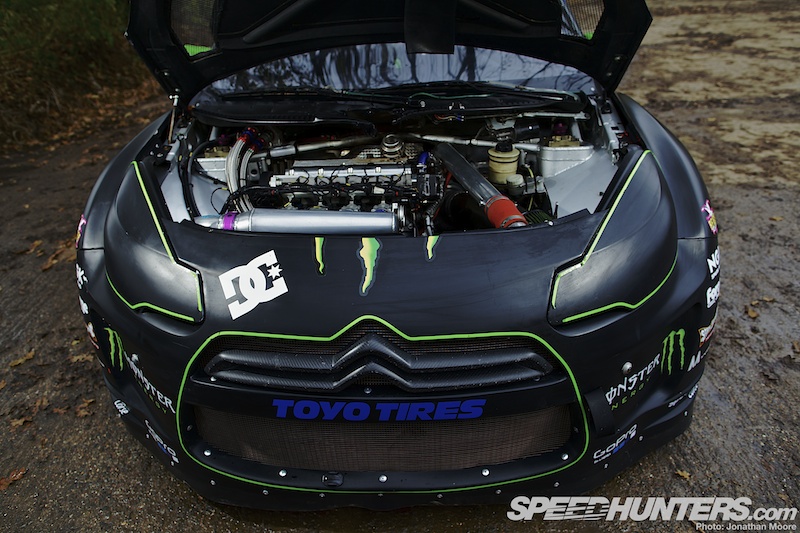
You’d think that changing the engine configuration should be relatively easy, but the problems are well-known and go back to the sheer grunt a Supercar-spec rallycross engine puts out.
Pat: “The WRC cars went transverse in the ’90s, but we’ve only now been able to consider changing over because it’s only recently that we’ve had a gearbox strong enough to take the amount of torque and power that a Supercar produces. The WRC was easy with only 300 – now around 250hp – whereas we have 600. So we’re using a new Sadev unit, who seem to be the only people who can make a gearbox reliable enough to handle the power. It’s a six speed ‘box, though we only tend to use five.”
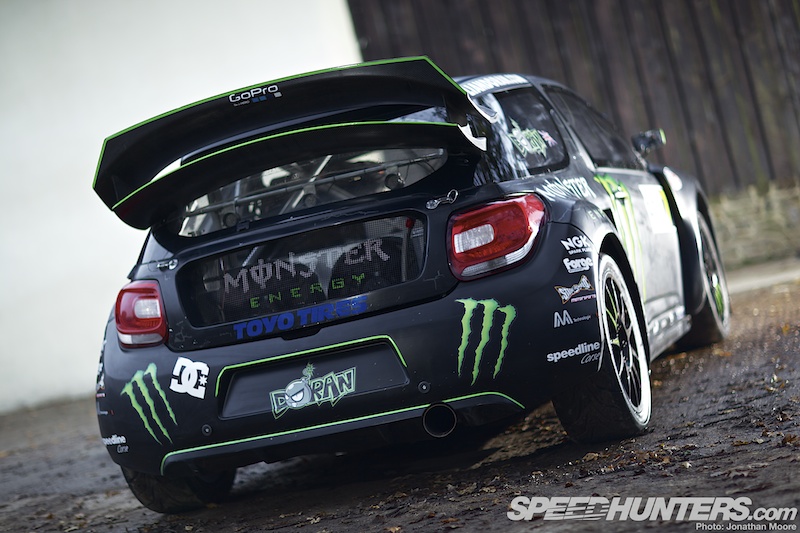
“The power actually makes the car easier to drive. The comparison I use is with the boats: if you buy a little 30-footer it’s a nightmare to drive the thing on the water, because it gets knocked around. But you drive a 70-foot boat and it sits there like a tank and it’s easy to move about. It’s the same kind of thing here. If you have a small, low-powered car you’ve got work all the time: you have to be so precise on where you’re braking and accelerating.”
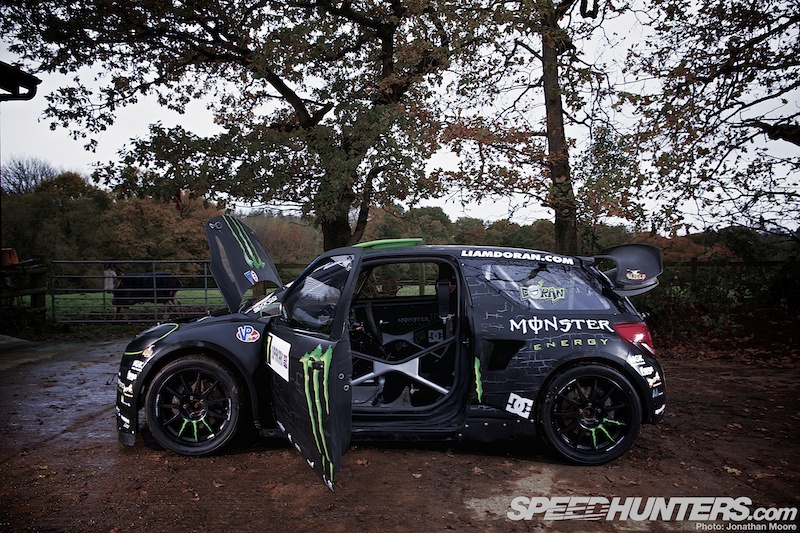
“WRC drivers always say that they can’t believe it when they drive a Supercar. They can make mistakes and get away with it. In a WRC, if you approach a corner and you’re coming in with the wrong gear and the wrong angle you haven’t got any power to get you out of it. With these, you can come in at the wrong direction, the wrong angle and the wrong speed, floor the girl and she’ll just power out of it. And that’s the buzz. That’s why they all get out and can’t believe it. That’s why Colin McRae always said that the quickest car he ever drove was a rallycross car – better than F1 or anything. He drove Dermot Carnegie’s 700hp Focus in 2002 and it blew him away. It’s the absolute raw grunt. They only do 130mph top – though that’s gearing rather than anything else – but they do 0-60mph in less than two seconds. Which is faster than if you threw it out of the back of a plane.”
Before you think that easier means that the car is simple to drive, think again: remember that a WRC car not only has half the power but also doesn’t have to deal with half a dozen other cars slamming into it in a corner. The power means that rallycross drivers can concentrate on the frenzied battle around them rather than worrying about a textbook correct angle of entry.
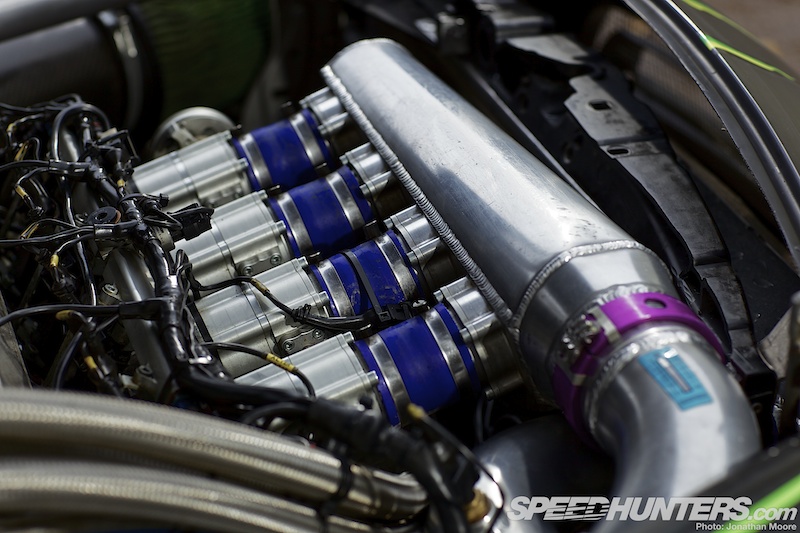
Along with the change in orientation and packaging, the Dorans also made a fundamentally change with the engine itself, moving away from the original Oreca-tuned unit and swapping to a Julian Godfrey Engineering engine. Torque is the objective: rallycross is all about getting out the corners and quick recovery from incidents, so if you’ve got a very torquey engine you can control the power on the throttle rather having to change through the gears. Godfrey is a veteran tuner, focussing on rallycross (he also provided Rhys Millen’s Hyundai Global Rallycross engine) but also covering hill climbing (the Doran’s Pikes Peak RS200 and several major European competitors) and touring cars.
Pat: “Sverre Isachsen won the ERC three times in a Ford Focus with an awesome power unit produced by Julian Godfrey. He’s always worked on my old Fords and I’ve known him for 20 years – he’s a lovely lad – and he produced this engine for Sverre where he only had to use four gears, whereas the Citroën had to use six. If you hear a WRC Ford engine it’s very deep, throaty engine and the Citroëns are more high, revvy engines. That’s why Sverre won the ERC, because he could come out of corners quicker than anyone else. So we wanted to put that principle to work in the DS3.”
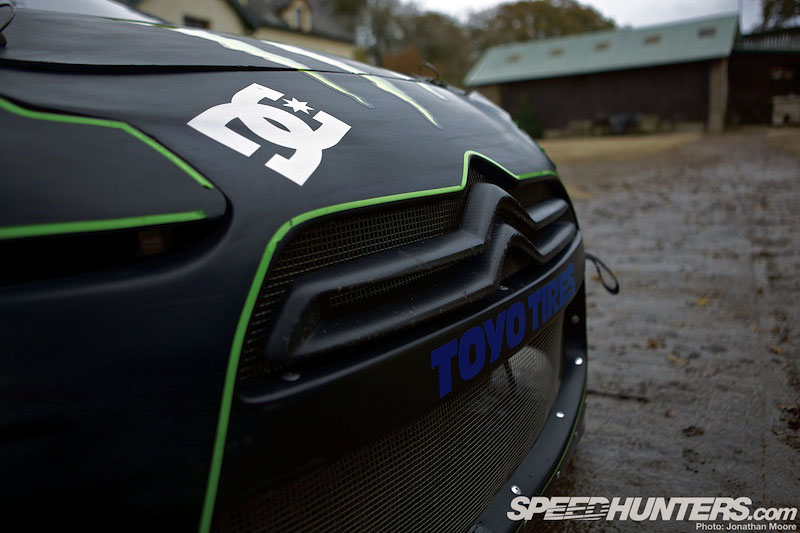
“We decided to do the most unethical thing as far as Citroën were concerned: of going away from Oreca to try the Godfrey version. It’s still a two-litre, four-cylinder Citroen block – the same block and head as everyone else – but the Oreca engine works from between four and six thousand revs and the Godfrey engine works between around three and half and seven thousand, which gives you more range and much better power at the bottom end. With an Oreca engine you’d come up to a corner and have to change through the gears, but with this engine you can use a lot wider gearing. You can feel the grip with your backside.”
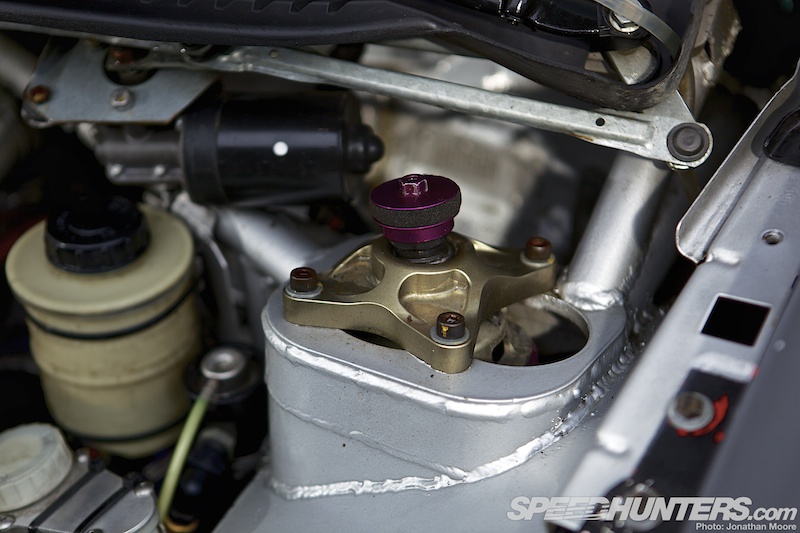
Another radical change with this DS3 has been a shift in which suspension methodology is used: there has been a back and forward between double-wishbone and McPherson struts over the years.
Pat: “It’s funny how it all goes around. My old RS200 is double-wishbone all round, but then everyone followed the WRC and moved to McPherson in the mid-’90s. Then everyone shifted back to double-wishbone in the modern era as that technology improved. But like with the gearbox, new developments have meant that McPhersons are coming back. Reiger are now able to do more with the McPhersons with adjustments and stability, and we used them on Liam’s DS3 during 2012. My DS3 stayed inline and double-wishbone, but on Liam’s we’ve tried transverse and McPherson.”
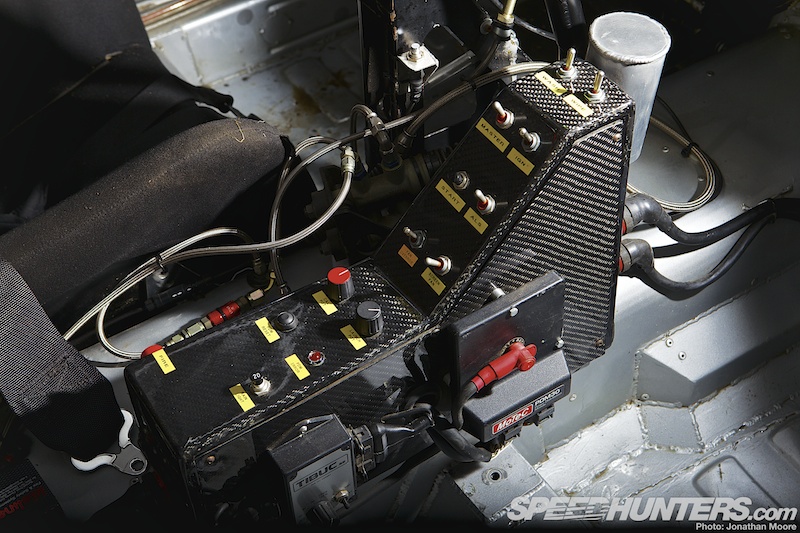
Rallycross regulations are relatively open and roughly follow the WRC, allowing plenty of different mechanical and platform approaches to be taken. But one thing that is seriously limited in both series is the power of electronics and any backdoor traction control: taming the car is all about your right foot – exactly the way it should be. Everything active has been banned, so cars aren’t allowed speed sensors on the wheels or anything that can tell the wheels about grip. Even sensors for the gearbox can’t run through the ECU (the DS3 uses the latest Pectel system): it’s not allowed to know what gear the car is in.
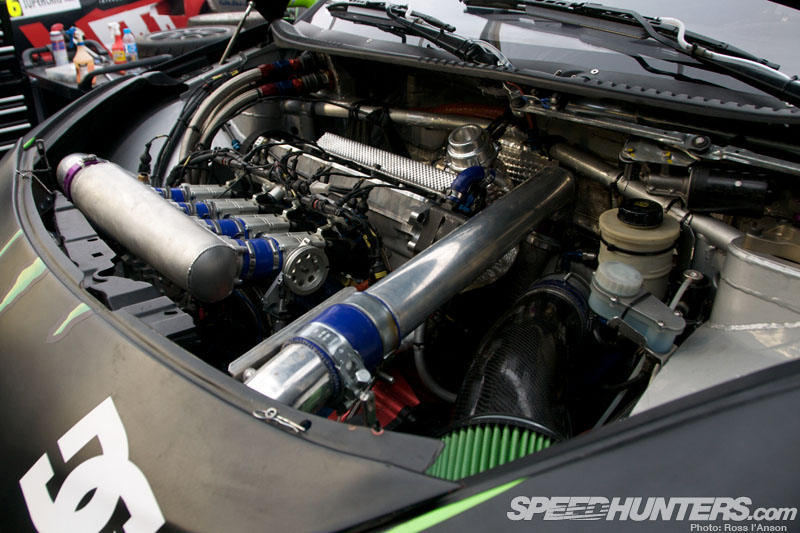
The next major regs cover minimum car weight and turbos. All Supercars put out roughly the same power: the size of the turbo isn’t limited, but all cars have to use a 45mm restrictor to produce around 600hp. The DS3 uses one of the largest turbos possible, mainly for getting that power at the all-important bottom end. This could normally mean a less responsive delivery, but a lot of work has been put into maintaining the low-end hit, mainly through the use of a quad throttle body system.
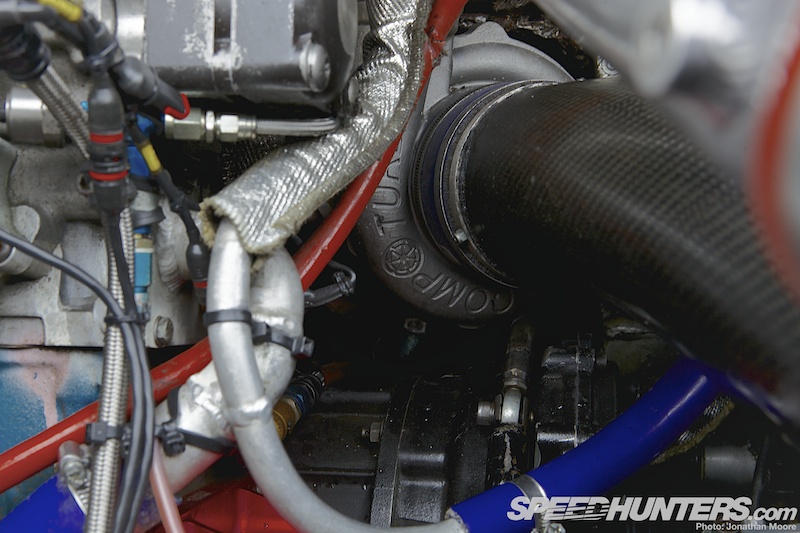
The turbo itself did cause issues on Liam’s DS3 during 2012 – not because of anything to do with performance but purely to do with positioning. Because of the tight engine bay packaging, the turbo had to be mounted in the right-rear of the compartment, down low, which took it out of any direct air flow.
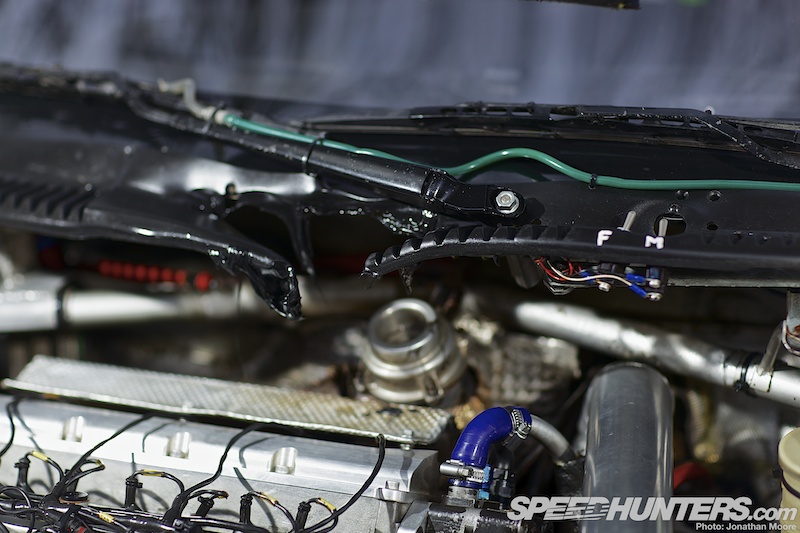
The heat it threw off tended to melt through any plastic components in the vicinity… For 2013 the Dorans are changing the position: the rules allow them a wider tunnel than they currently need with the transverse mounting, so that should give them a bit of space to play with.
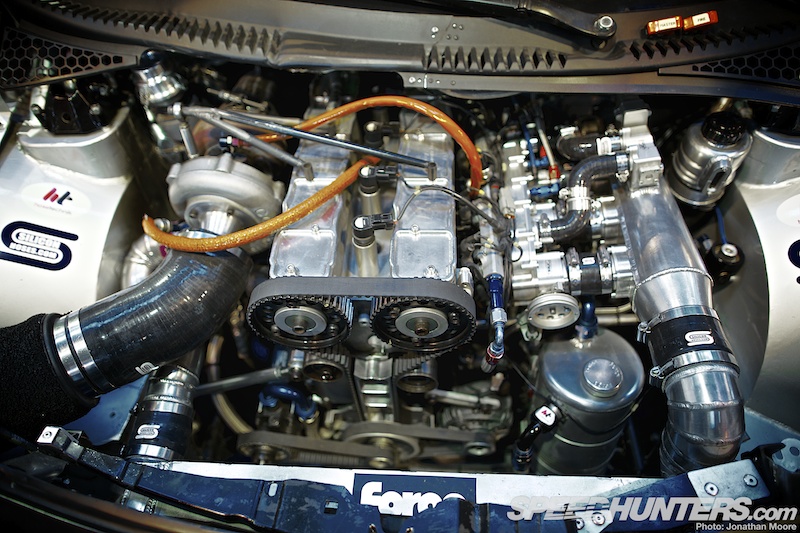
The engine and turbo are the same on both the inline (as seen here) and transverse DS3s and can be swapped between them as necessary: there are just different exhaust manifolds and pumps in use. It’s a compact unit, as all the current WRC engines are.
Pat: “If you take all the gubbins off the engine it’s just four pistons and a crank. My view is that the engine is only there to survive what the turbo gives it. It’s not like a normally aspirated engine where it’s producing all the power. For us the turbo is producing the power; the actual engine is sitting there going, ‘Oh my god, I can’t deal with this!’. The heads are trying to lift, the blocks are trying to split in half… That’s why when these engines are built we have to dry sump them and build a cradle to hold the blocks together. We drill the blocks through from top to bottom, and brace them from underneath.”
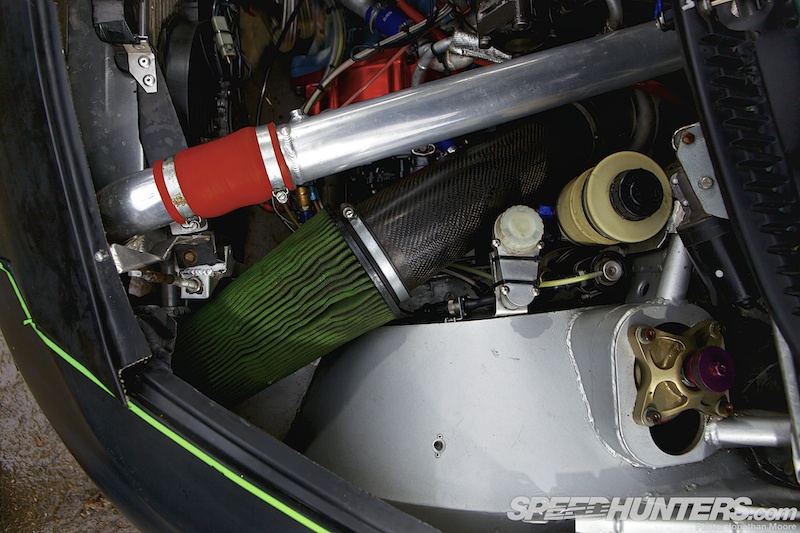
“But the engines are actually very reliable. We get about eight meetings out of an engine. We’ve had one or two with little problems, but for a first year with a new project they’ve been phenomenally reliable. It’s just this thing of it being transverse and dissipating the heat because of the turbo position. You can see all the heat shielding we have to use.”
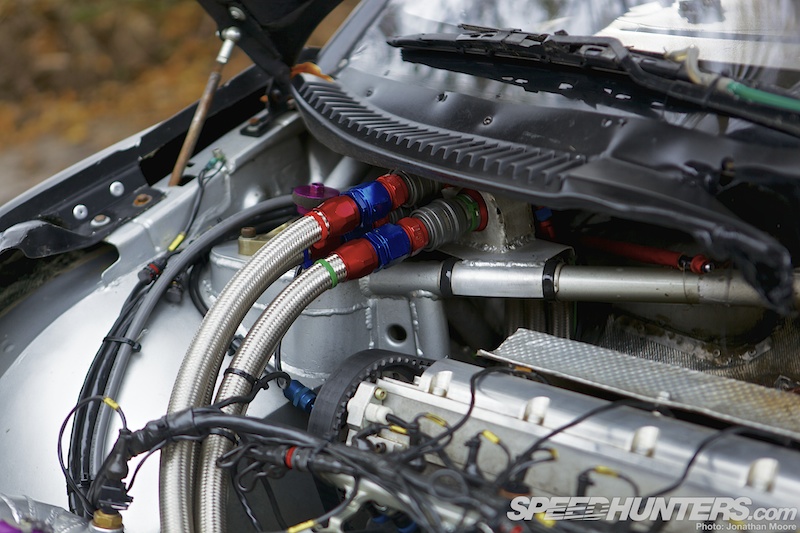
Tying all this stuff together is a whole lot of high quality piping and hoses. Forge Motorsport supply the intercoolers and radiators and prepare all the piping, which naturally has to be incredibly efficient and robust.
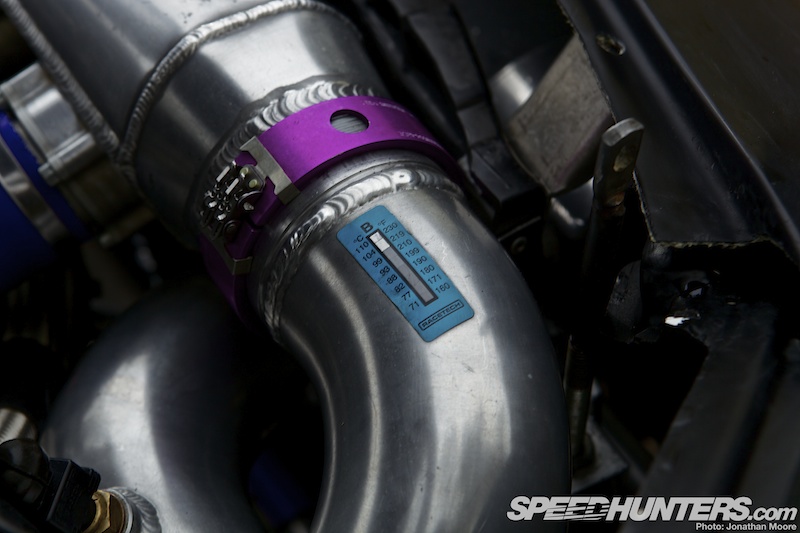
The car is send to Forge for bespoke fitment, which takes a couple of weeks to complete.
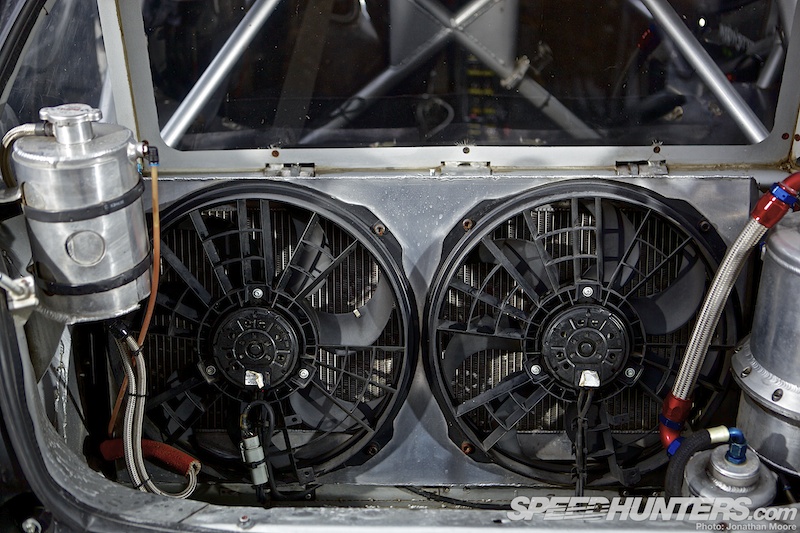
The big intercoolers are right up in the nose, whereas the radiators are rear-mounted, which is the traditional route in rallycross.
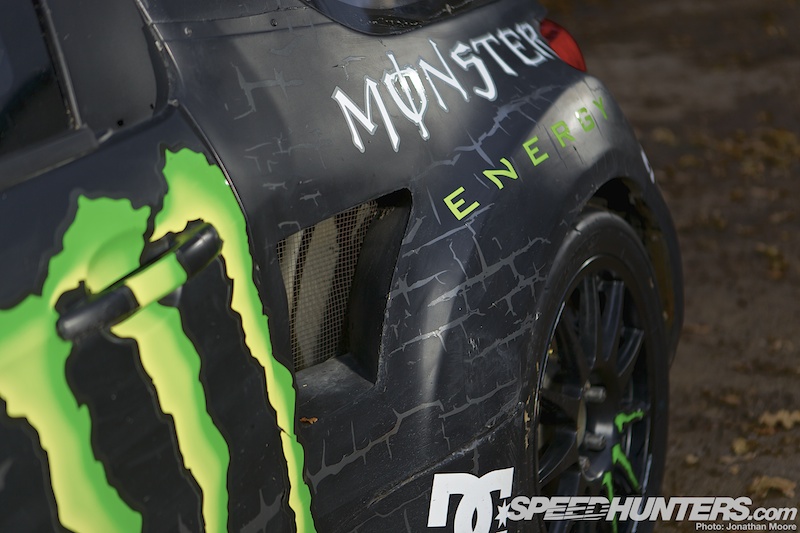
This not only helps keep them out of immediate danger but makes for a better weight distribution – and there’s plenty of airflow to them via the side vents.
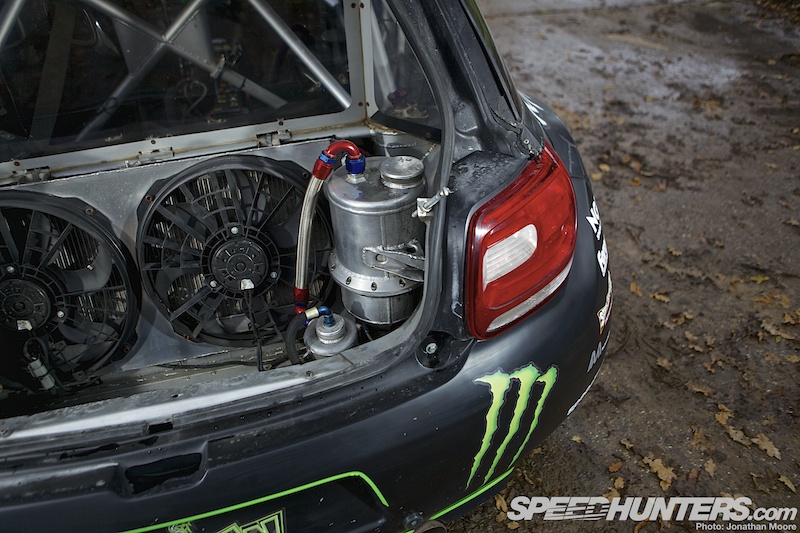
The rear also contains the oil and the header tank for water; normally the car doesn’t go through much fluid during a weekend – it it does, you’re in trouble… Fuel is series-standard VP Racing, road-legal 100-octane. The DS3 carries a mandated fog and brake light system on top of the standard units. For all the talk of brute force and simplicity, technology does still play a part: and F1 tech at that. The DS3 uses McLaren TAG alternators, which are more expensive but very reliable and able to take both the extreme temperatures and the pounding a Supercar gets every time it goes out.
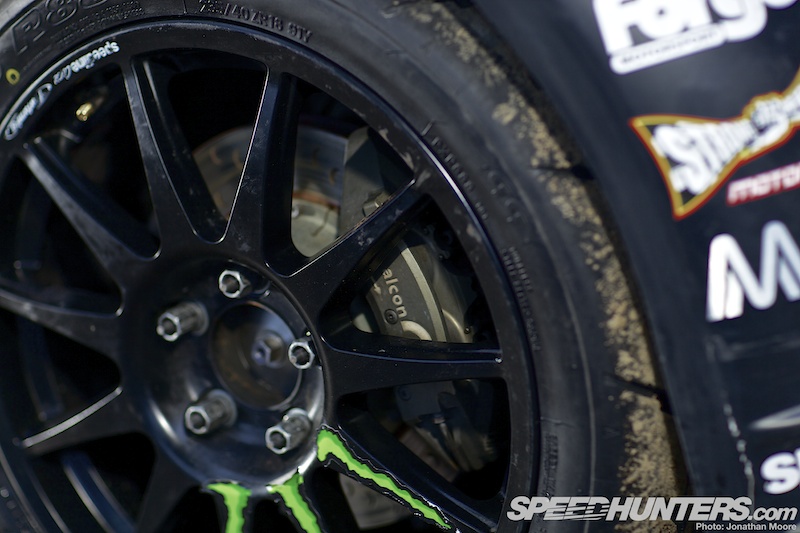
Braking is handled by Alcon disks mounted all round, nestling behind Toyo tyres on magnesium Speedline rims developed specifically for the car.
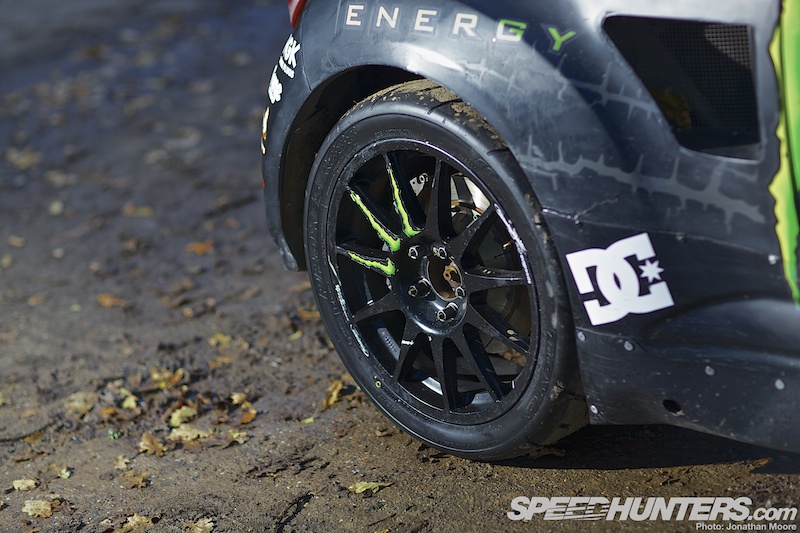
The DS3 uses a carbon triple-plate Alcon clutch, the installation of which plays an important role at the start of a race. It all goes back to how the car gets off the line, which involves two things: mechanical grip and electronic controls. The clutch plays a fundamental part in the former, as the team run theirs with a bit of play when cold. The principle is that when the car pulls off the line the clutch slips very slightly, helping control all the power being delivered and giving the driver five metres or so where the car starts moving without lighting up the tyres before heat expansion clamps the clutch into working position. It’s very simple but fantastically effective – and legal.
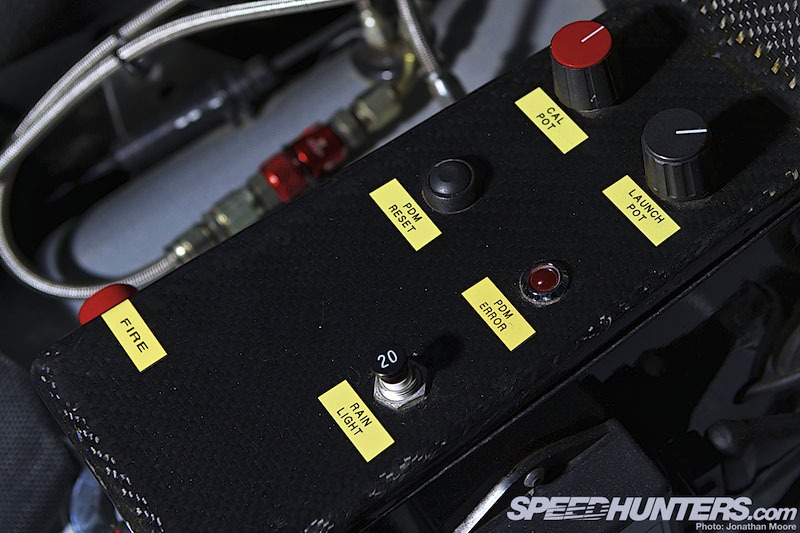
As launch control systems are banned, instead a custom RPM and boost setting is dialled in, controlled by a button on the steering wheel. Settings are preset by the car’s engineers and then fine-tuned on the dummy grid from the cockpit: that could be anywhere from five to seven and half thousand revs and one to two boost depending on conditions.
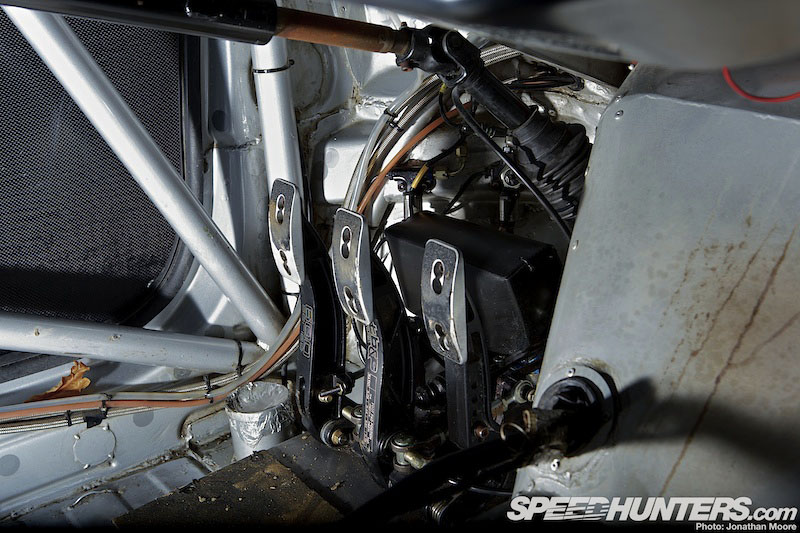
The clutch pedal is only used for the start: the procedure is foot down and thumb on the launch control – and wait for the lights. Lights off, foot up and then thumb off the button after a brief pause. From then on its sequential all the way and left-foot braking to balance the car.
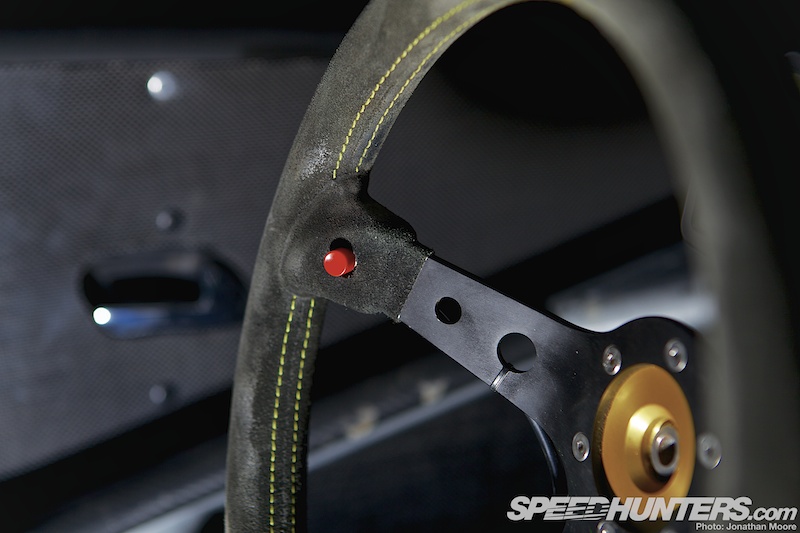
Pat: “If there’s no grip at all because you’ve got it completely wrong, which can happen from time to time, you then lift your foot off the throttle and go back down again, so there is that balancing act. But if you get all the calculations right then you’re off and clicking into second gear. Sometimes I leave mine on for a second if I feel it hasn’t got enough grip. It’s a bit like the stories of Schumacher, where he ran some corners in races using the launch button to help with traction.”
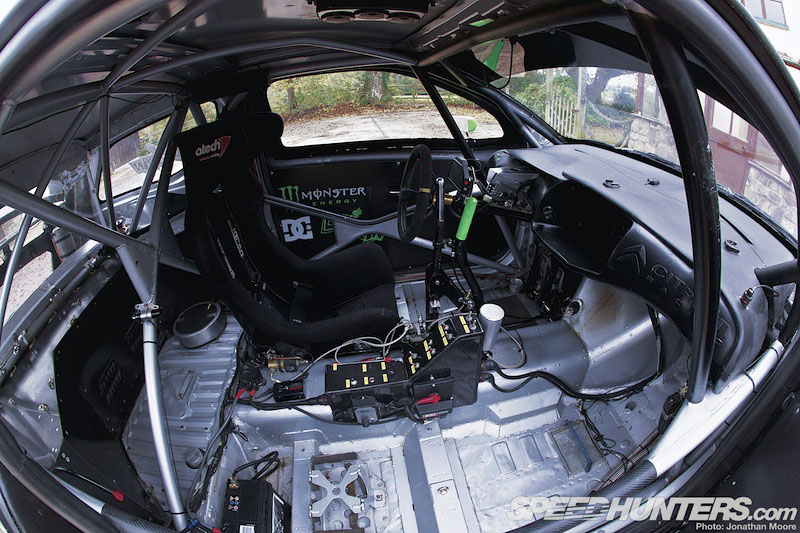
The cockpit of the DS3 is pretty spartan – there’s as little distraction as possible. After surviving a start (which in itself is no guaranteed thing) the driver then has to completely focus on what’s ahead. And behind. And to the side. Rallycross tracks don’t have the luxury of a straight to relax on: total concentration is required to keep the car pointing in the right direction as it bounces and bucks across the different surfaces. No mechanical changes can be made from the cockpit, so the switchgear is kept basic: wipers, fans, ignition, launch – and then a main master switch for everything else.
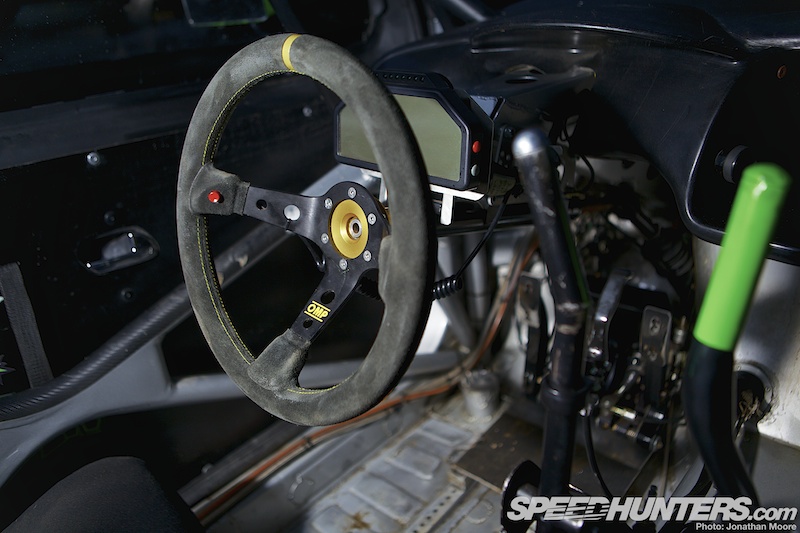
Aside from the magic red button, the wheel is a standard OMP removable piece; the handbrake and sequential shifter are mounted up high for easy access. There are shift lights on the dash, but drivers don’t tend to use them: this isn’t a sport where getting the right revs and perfect angle into a corner are a priority.
Pat: “Obviously there’s an optimal point to change, but rallycross is more about reactions, about trying to keep the car straight. You go from tarmac to no grip on the loose and the car is trying to go backwards everywhere. When we test at Lydden and don’t use the loose sections and we always learn more, as the car actually talks to you and you’re not holding onto this animal. If I go and do a trackday or circuit race it’s like having a cup of tea!”
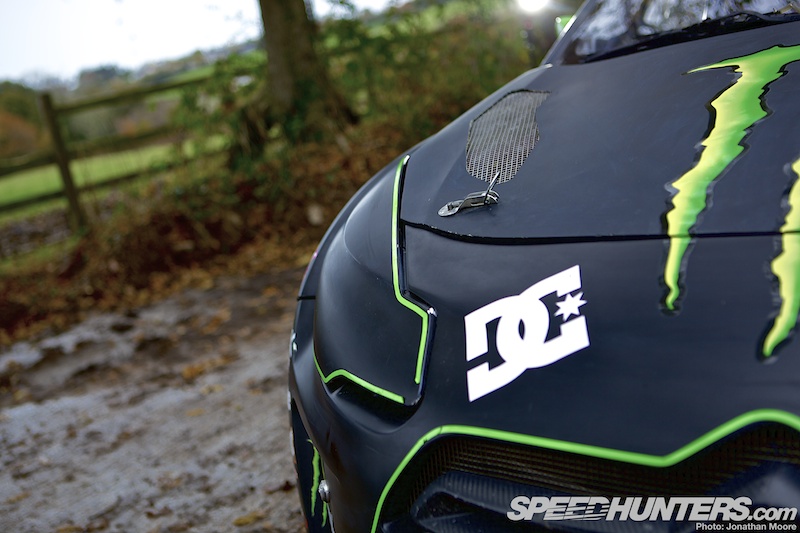
As with any professional outfit, it take more than just the man behind the wheel to go racing. A data engineer oversees all the electronic systems, whilst a second engineer sees to GPS and cameras – they use four GoPro cameras as standard, not for public consumption but to help with driving analysis. The footage, which includes various driver-facing, internal and external angles, is used to corollate the data streams and help fine-tune set-ups over a race weekend. The less hard a driver is having to work, the better set up the car…
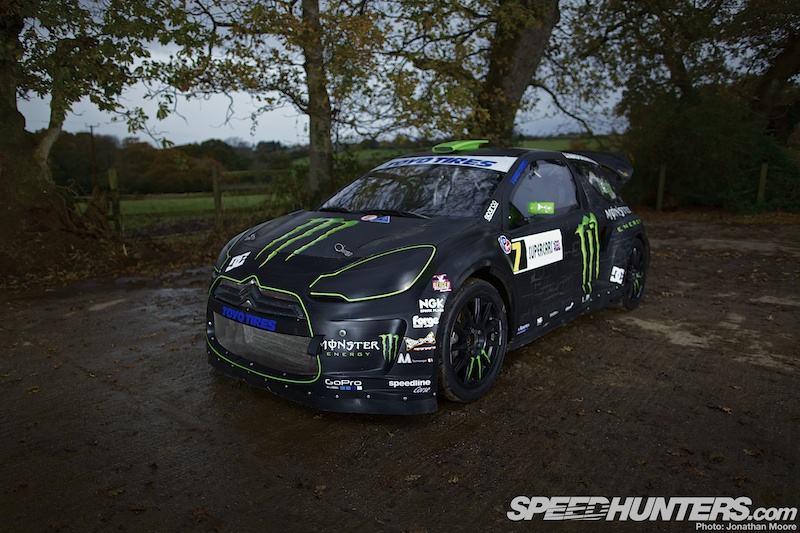
2012 was no disaster, but it also didn’t prove to be the success for the DS3 that the Dorans had hoped for – at least according to their high threshold of what would qualify as success. But they could hardly be disappointed with second both in the European Rallycross Championship for Liam and in the UK for Pat (ironically behind Julian Godfrey in a Fiesta!).
Pat: “It didn’t quite work this year, but that was mainly down to us being a new team, operating in two championships with a new car and trying a new engine at the same time. Maybe we were a bit ambitious, though Liam came second in the ERC. He won the last round in Germany and the car was getting there, but we knew it wasn’t completely right. That was mainly because of the gearing: specifically the ratios. We’re slowly getting there and fine-tuning it all. It was the suspension as well: Reiger only came in to properly help us towards the end of the year, and they’ve been absolutely superb. Since they’ve come on board it’s been a godsend. And we know the concept is right. For this year we’ll have Godfrey engines in all our Citroens – we should have four: two in the BRC and two in the ERC, likely three DS3s and the C4.”
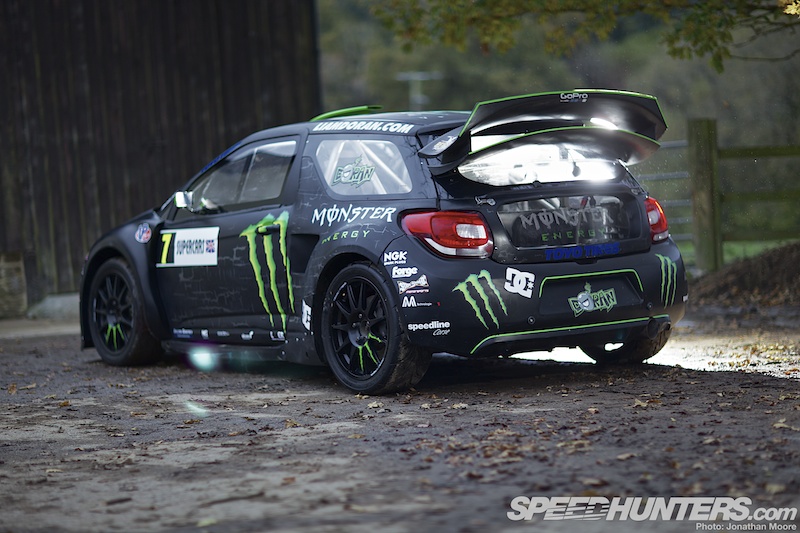
The Doran’s base is now a hive of activity, with preparations well underway for the new season ahead that will include more outings for the hillclimb-spec RS200. The DS3s will be aimed squarely at winning the championships in 2013 – and your sights should be set on seeing them try to achieve that.
MONSTER ENERGY CITROEN DS3 RALLYCROSS SUPERCAR
TECHNICAL SPECIFICATIONS
CHASSIS
Structure: M-Technologies built and prepared, lightened and reinforced body with welded, multi-point rollcage
Bodywork: Carbon-composite fibre, P4P perspex windows
ENGINE
Julian Godfrey Engineering 2.0 turbocharged engine
Bore x stroke: 85.5 x 88 mm
Capacity: 2,020 cc
Maximum power: 590 bhp at 5,500 rpm
Maximum torque: 900 Nm at 3,850 rpm
Specific output: 277 bhp/litre
Distribution: Double overhead camshaft valve train driven by timing belt, four valves per cylinder
Engine Management: Pectel SQ6 unit
Additional suppliers: NGK spark plugs, Pipercross air filter, VP race fuel, Forge Motorsport air and water coolers
CLUTCH
Alcon Carbon triple-plate
TRANSMISSION
Type: Four-wheel drive
Gearbox: Sadev transverse six-speed sequential/manual control
Differential: Sadev front and rear mechanical, auto-locking
Sadev shafts/CDX joints
BRAKES
Front: 330mm ventilated disks, Alcon 4-piston callipers
Rear: 330mm ventilated disks, Alcon 4-piston callipers
Distribution: Adjustable from cockpit
Handbrake: Hydraulic control
SUSPENSION
Type: McPherson
Shock absorbers: Reiger Racing thee-way adjustable shock absorbers (low- and high-speed compression and rebound)
STEERING
Type: Hydraulic power-assisted steering
WHEELS
DRY: 8×17″ Speedline wheels
WET: 8×18″ Speedline wheels
Toyo Tyres
DIMENSIONS, WEIGHT AND CAPACITIES
Length/Width: 3,948mmx1,820mm
Wheelbase: 2,461mm
Track: 1,618mm (front and rear)
Fuel tank: 30 litres
Weight: 1,100kg/regulation 1,300kg minimum including driver
Jonathan Moore
















Well great... now I have to spend an hour watching rallycross on youtube.
@ssbeane Check out mr rallycross Martin Schanche
Wow, absolutely killer detailed article! Thanks for going to all the trouble of getting all the information and even interviewing Pat--i'll never think of a turbo engine block the same....and i wondered why the cars always had that sidways slide off a launch...i just thought it was some imperceptible slope of the tarmac or front wheel torque steer messing with the car's driving angle under four-wheel-spin. Lol, now you got a bunch of mechanical engineers in the office here getting all worked up over how 900Nm could possibly be created from a 2 liter engine
How do these cars go from 0-60 in less than 2 seconds with 600HP and 1100Kg weight? I need a mathematical explanation.
I've not got a mathematical explination but I imagine the AWD, launch control and all that torque provides a helping hand. Also I think, I may be wrong, that the sub 2 seconds is measured on dry tarmac
Can't wait for the round at Lånke 14-16th of june! One of the better articles on speedhunters for a long time as i've always wondered how things work underthe bonnet of these cars.
If you see these cars in action you will understand! Although the can't use ati-lag, the choice of dumping a large volume of race-gas in-between gear-changes help spool the turbocharger almost as good.
Any explanation as to why the seat is on the left when the dashboard originally had the driver's position on the right? I'm guessing weight distribution.
Any explanation as to why the seat is on the left when the dashboard originally had the driver's position on the right? I'm guessing weight distribution.
Oh man, I want to see more details because there is so much awesome just crammed in all together. Fantastically gorgeous!!!!
Oh man, I want to see more details because there is so much awesome just crammed in all together. Fantastically gorgeous!!!!
@zz it's possible. The 2013 GTR does it in 2.8secs? And it's close to 600hp.
@zz it's possible. The 2013 GTR does it in 2.8secs? And it's close to 600hp.
@JSequoia they are truly monstrous number from an engine of the size, id like to see someone utilise one for drifting as it seems to do what most 2l 4s don't do, make torque
@JSequoia they are truly monstrous number from an engine of the size, id like to see someone utilise one for drifting as it seems to do what most 2l 4s don't do, make torque
@777 did you catch the comment on the citroen about having four throttle bodies? seems like that's the main mechanical/plumbing difference between this car and a typical 2L 4 cylinder that's also got a large turbo....i'm wondering if that (along with the size of the turbo) are what's making the difference so huge
Using an awful lot of torque and some very close gearing! As MarkCuthbertt says I think that figure is measured on tarmac. I've seen this (and many other rallycross Supercars) in action and, in my humble opinion, there are few sights and sounds in motorsport as great as a pack of rallycross cars taking off from the line.
Fantastic article Jonathan, I saw some of the Speedhunters team at Lydden last year and its great to see you continuing to produce rallycross articles. Just one note though, you say: "That’s why rallycross cars go from a pristine condition pre-race to looking like they’ve been blown up in the space of four minutes – and still finish.". Some drivers are better at getting the cars over the line in one piece than others. Liam isn't one of them!..
PS: Jonathan, its Colin McRae: only one "c"!
@tbtstt Hehe... very true! Some drivers are a little more 'keen' than others! And yes, gah! Idiot. McRae! Typing fail.
@Jmayhem I think that's just because it's a French car by origin!
@MatsNorway @ssbeane Absolutely fabulous... Rallycross has always been great, but the Schanche era was particularly amazing. RS200s, 6R4s, Porsches, XTrac Escorts... heaven!
i wanna see this on a drag strip with slicks and look at the peoples face when they get beaten by a DS3!
@Jonathan Moore Haha, no worries. Pet hate of mine, so I had to point it out, sorry! "Keen", yes thats definately one word for it! Will you guys be doing more rallycross car features?
Un-real. I wish we coupld replace all the dumb redneck motorsports with Rallycross!
never been into rallycross really (dunno why, nothing bad about it) but the cars always impress me
Very interesting! Especially the bit about engine placement and its effect on grip...
Very interesting! Especially the bit about engine placement and its effect on grip...
@MatsNorway Great stuff. He definitely mastered the contact part of racing...
900NM!!!
If only there was rallycross here in Barbados.
Great piece Jonathon ... great being a sponsor of this epic car
@JMoore where were you back in 2006 ? http://www.justbajan.com/cars/motorsports/2006/121606_cross/index.htm notice the name of the person driving the white fiesta
@Peter Miles Excellent work as ever Peter – I'm looking forward to seeing more of the Golf as well. It looks awesome!
Rallycross is probably one of the most "redneck" sports in Europe...
I was 12 and not paying attention to any form of racing at that time. What I meant to say was, "I wish there were more frequent rallycross events in Barbados."
@Jonathan Moore @MatsNorway @ssbeane The classic days of Schanche, Gollop, Welch, Hansen and Pailler. Had a some fantastic days at Lydden in the past.
just had an orgasm!